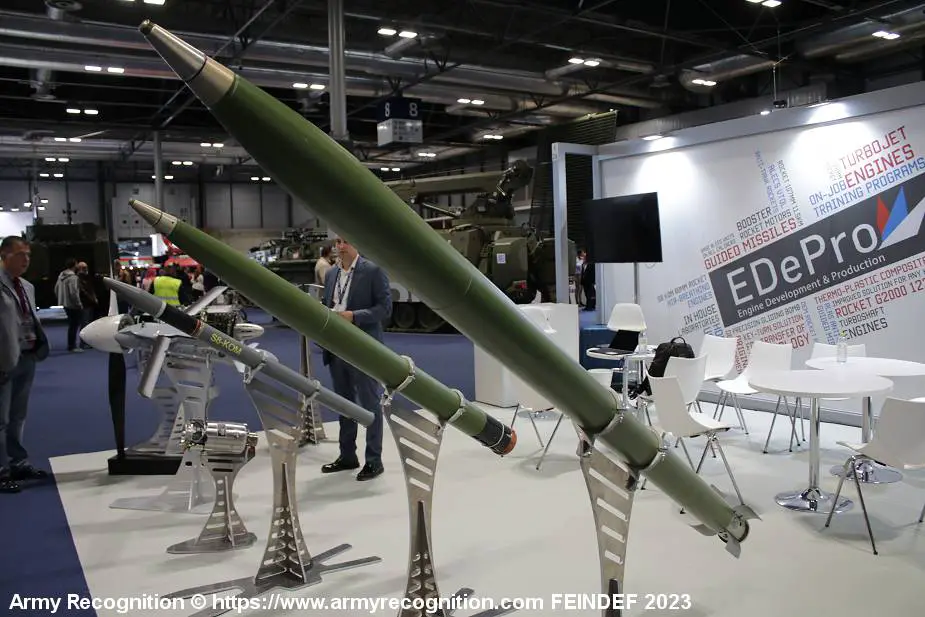The Serbian company, EDePro, has developed a new generation of 122mm rockets, named G-2000, offering more accuracy and double the range compared to the original 122mm BM-21 GRAD rocket. This rocket was showcased at FEINDEF 2023, an international defense exhibition held in Madrid, Spain.
Follow Army Recognition on Google News at this link

Serbian company EDePro displays a new generation of 122mm rockets at FEINDEF 2023, a defense exhibition in Spain. (Picture source Army Recognition)
EDePro, an acronym for Engineering Design & Production, is a Serbian company specializing in advanced technologies, such as rocket and missile design and production. They are acclaimed for their development of various missile systems, unmanned aerial vehicles (UAVs), and sophisticated guidance systems.
EDePro had been also involved in several high-profile projects, such as the development of the ALAS (Advanced Light Attack System) missile system.
The G-2000 is an innovative addition to the field of rocketry, representing a notable leap in aerodynamic and propulsion system design. This advanced rocket system, characterized by its range of 40.5 km, boasts a novel aerodynamic design, improved propulsion, and compatibility with existing launch platforms, making it a pivotal innovation in modern rocket technology.
A distinctive feature of the G-2000 rocket is its newly designed warhead. The aerodynamics of the system has been notably improved compared to its predecessors. These advancements reduce drag, increase stability in flight, and optimize the overall performance of the rocket, ensuring that it can accurately hit targets at the edge of its impressive 45 km range.
Not only does the G-2000 exhibit state-of-the-art design, but it also maintains compatibility with the mobile multi-tube rocket launchers such as BM-21 and RM-70, or other similar launchers currently in use. This element of backward compatibility significantly reduces the cost and logistical challenges of deploying this new rocket technology, as it doesn't necessitate new launching systems.
In terms of propulsion, the rocket motor of the G-2000 has been entirely redesigned. The propellant grain is a single cylindrically shaped piece, inhibited along the outer surface and front end, which features two different types of propellant with varying burning rates. This dual-propellant design has facilitated a high loading factor, near-neutral burning, and a reduction in the amount of silver used.
A further revolution in the G-2000’s propulsion system is its use of modern thermoplastic composite propellant, containing a high percentage of aluminium. This type of propellant achieves burning temperatures exceeding 3000 Kelvin and offers a high value of specific impulse, yielding a high-efficiency burn and a significant improvement in overall rocket performance.
The steel nozzle, abundant in ablative materials, has a single graphite throat, aiding in the efficient management of exhaust gases and contributing to the propulsion system's excellent performance.















